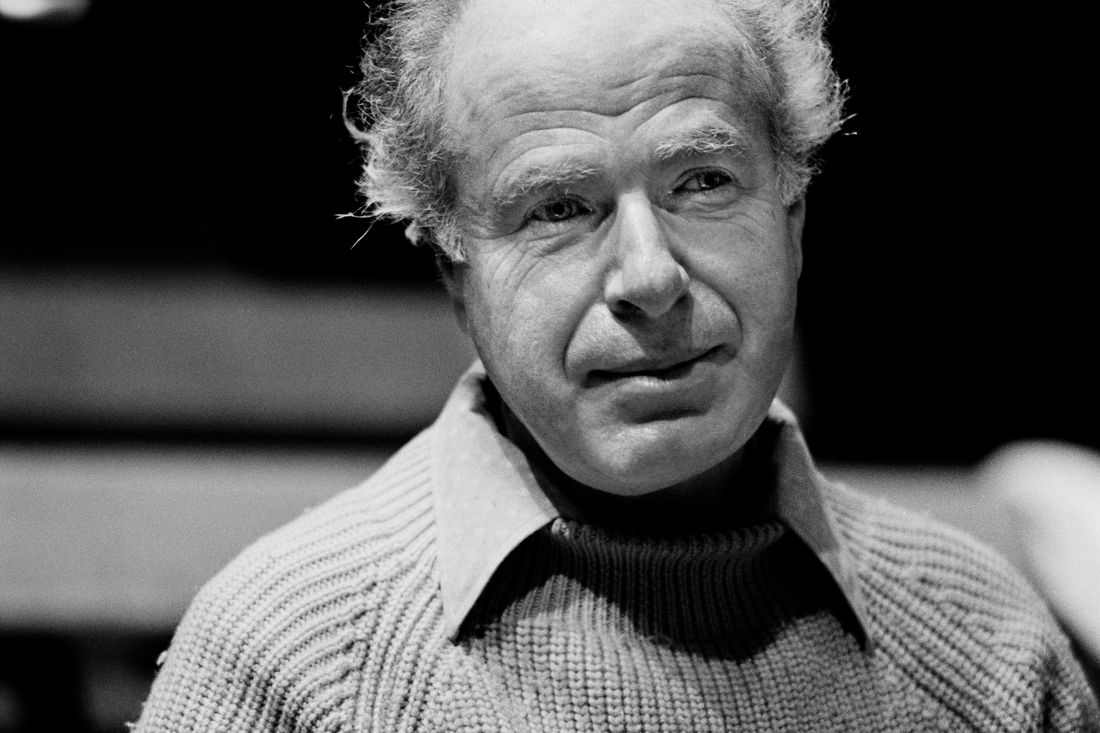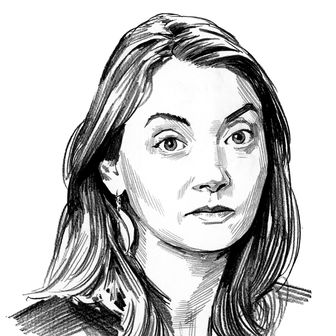
Peter Brook had been writing and devising and directing work so far into his 90s he had begun to seem immortal. In New York in 2020, he still overflowed with bright intensity: In a post-show talk with Tarell Alvin McCraney, wearing a dashing little scarf, he spoke about the integration of self that he thought led to the theater worth making. He had dedicated so much to this project, it seemed that every ticking thing — the world, time, death itself — might hesitate so that he might come to some resolution. But resolution and conclusion were never what Brook was looking for. He even deplored young people writing down what he said in speeches: “If it’s forgotten,” he said, “so much the better.”
The first encounter many of us had with Brook — who died on Saturday at 97 — was when someone, somewhere, handed us his 1968 book The Empty Space. It is as much a devotional pamphlet as it is a book; it almost asks to be given away. (Every time I look for it on my shelves, it turns out that I’ve passed it on, and I have to buy it again.) Someone gave it to me in college, and then someone else did, and then a professor brandished it in a seminar. Like any radicalizing text, The Empty Space is a combination of permission and exaltation, of “come one, come all” invitation and intoxicatingly unreachable standards.
Its opening dropped all the apparent barriers: “I can take any empty space and call it a bare stage,” Brook wrote. “A man walks across this empty space whilst someone else is watching him, and this is all that is needed for an act of theatre to be engaged.” I still remember the way those sentences made everything possible: It felt as if theater were the world’s natural state and that nothing could stop us from making it. As you read on, though, the art-mountain started to seem steeper and steeper. How much could actually be worth his aspirational, exciting, exacting terms — “holy” or “rough” or “immediate”? According to Brook, nothing other than a subtle and resilient truth would suffice, and its pursuit would require the total dedication of each person’s mind, heart, and soul for a lifetime.
The barest touch of his intensity was contagious. The Empty Space turned us into zealots. Even images of his landmark productions could change a life; a single textbook picture of his 1970 Midsummer Night’s Dream made me a set designer for years. At that point, I had already missed the first several phases of Brook’s career: the vivid productions in the 1940s and ’50s, when he first blew the dust off opera and Shakespeare; the formal revolutions of shows like Marat/Sade (which won him his first Tony award in 1966); his shift into what was then called “world theater,” with works like the nine-hour The Mahabharata and The Conference of the Birds. By the ’90s, when I started seeing his work, Brook was already in his long last period, a sort of myth-infused storytelling style characterized by rigorous minimalism.
It was a monklike aesthetic that was best experienced as if you were sitting on the floor, at the metaphorical knee of the great work. It benefited from a certain grateful intensity from its audience. (In 2000, I saw his and Marie-Hélène Estienne’s Le Costume while huddled on the stairs at his Bouffes du Nord theater, where the staff had stashed me after I turned up there, a little weepy and bewildered and unable to buy a ticket. I was not the first sniffling pilgrim they’d put there.) That was the same year as his Adrian Lester Hamlet, one of the many productions to deploy the tools he would use forever after: bamboo poles as set pieces, characters in simple robes, carpets instead of furniture, a general impression of saffron-orange and wine-red colors hovering in the air. Georges Banu called this stripped-down work the “theater of simple forms, of direct communication … of essence.”
As much as we wanted him to be our guru, he evaded that obligation. (I interviewed him when his pared-back A Magic Flute was about to come to New York. “I don’t want anyone to follow me; I don’t want to create a tradition,” he said.) In my case, I kept falling in love with the work from previous eras, though I only ever saw them on video — I dreamt about his King Lear and The Mahabharata — only to be disconcerted by the newer productions. For instance, many found his recent Battlefield persuasive and beautiful though the insistent rapture struck me as reductive. According to his books, though, I was missing the greater part of what he was making. “Theatre is a machine for climbing and descending the scales of meaning,” he wrote, and he was transmitting meaning in the fusion of his ensemble, their inter-reliance, their ability to focus on both intimate details and their own formed community. I wish I could have understood it; now I never will.
So how could he be both guru and not-guru? As a practitioner, he was a little like the art mystic Jerzy Grotowski — in pursuit of magnificent objectives, both men had gone “to the edge of the forest,” leaving mainstream theater for a process so intense that the commercial sphere could never match it. But unlike Grotowski, Brook stayed totally engaged with his audiences. He wanted to make work that touched the public, and he kept explaining himself, raising our hopes and standards for an art form that’s too often degraded and compromised. Here he is describing the ideal actor: “He has to be like a glove that perfectly fits the hand, where the hand is both inside and not inside at all, and where the glove has at the same time the power of a hand and the openness of an empty glove.”
Who on earth can meet those requirements? Brook knew it was impossible: “We are confronted with paradoxes,” he said. His productions were one thing, but it was these expectations — so rigorous, so enigmatic — that actually kept the theater’s engine turning. When Brook met Edward Gordon Craig in 1956, he described the ancient visionary’s endlessly refillable passion. “It is said that it is the priest tending the hidden flame that keeps a religion alive,” Brook wrote in his autobiography, The Shifting Point. By the ’50s, Craig, a turn-of-the-century genius fallen far out of favor, was obsessed by his theoretical, unworkable marionette experiments that would never see an audience. Still, wrote Brook, we must particularly honor and cherish him because “the theater has few wise men and few who jealously defend its ideals.”
In so many ways, Brook was our Gordon Craig. First, he was the long-lived titan tying our forgetful world to its great past: Through him we could still touch his many collaborators, like Laurence Olivier, Irene Worth, Paul Scofield, Truman Capote, Peter Weiss, John Gielgud, and Andrei Serban. His loss is the collapse of a last human bridge to a time that now, in an instant, seems impossibly long ago. Like Craig, too, he changed the theater forever — everywhere you look you see his influence. Brook’s 79-year career included the accomplishments and styles of at least three men, each one capable of ringing the theater like a giant bell. His stamp is on everything, on our understanding of Shakespeare, on opera production, on experimental drama, on international collaboration, even on the buildings where we watch our shows. But most of all, he was our priest who tended the flame. It was indeed all that was needed: A man walked across an empty space.


